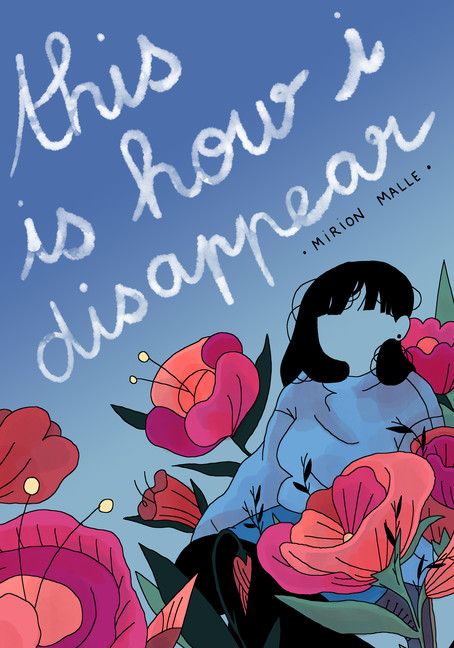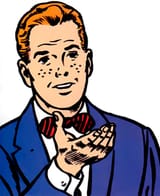Mirion Malle Shows Us Just How Strong We Are in This Is How I Disappear
Mirion Malle doesn’t judge her characters and asks us to also not to judge them. The book is seeking understanding, empathy, and the ability to allow ourselves to realize we don’t know everything that’s going on in our own or others’ lives.
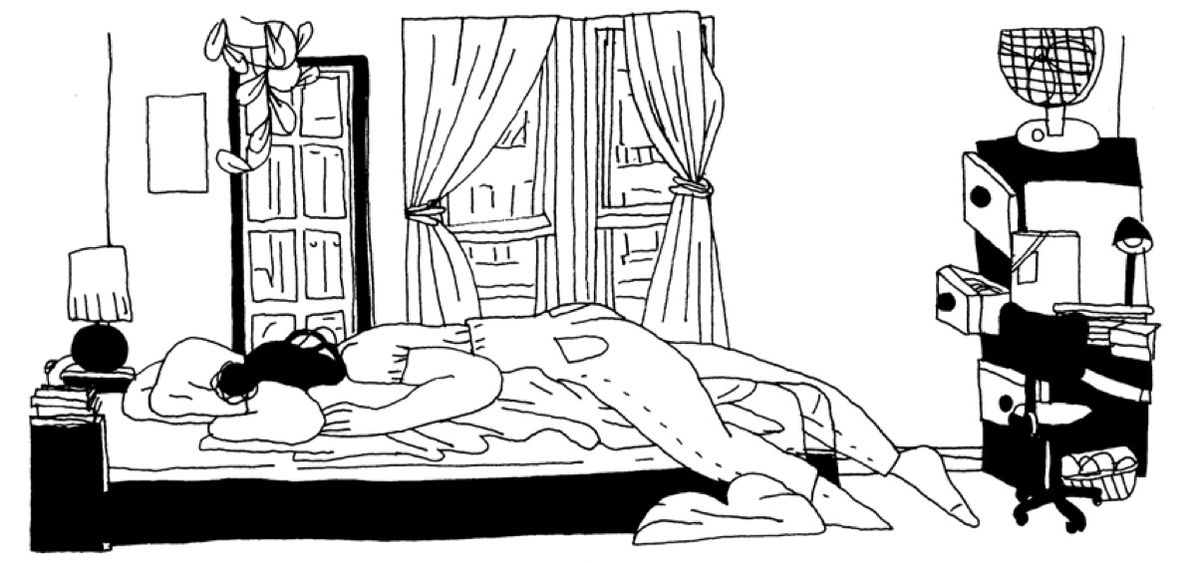
This Is How I Disappear is a comic about strength and our inability to recognize it in ourselves. It’s about depression that tells us that we’re not strong enough or good enough or brave enough to deal with that depression. As Mirion Malle shows it, depression is this self-feeding cycle of one step forward, two steps back as Clara slowly discovers an inner strength in her only to be consistently set back by self-doubt and fear. Reading Malle’s book, you’ll probably recognize yourself somewhere in it, whether it’s in Clara and her fight against depression or one of her friends who aren’t sure of how to best help Clara. Malle creates a story about empathy that helps provide a guide for how to deal with depression.
From the outside, Clara appears to be a successful, young, professional woman working in publishing and writing a semi-autobiographical book that mixes prose and poetry. But from the opening pages, we know something different about Clara. Her first words are, “The first time I felt like I wanted to die, I was probably, like, twelve?” That’s a way to set the tone right from the start but even that isn’t quite the whole story here. Shortly after Clara makes that confession to her therapist, she’s at a get-together with her friends and tries to help out a young woman she just met that’s obviously going through her own panic attack. Calm and collected, Clara helps her through the attack, turning her own experience into the strength that she needs to help Amélie. Clara experiences a strength and sturdiness helping Amelie that she can’t find to apply to her own life.
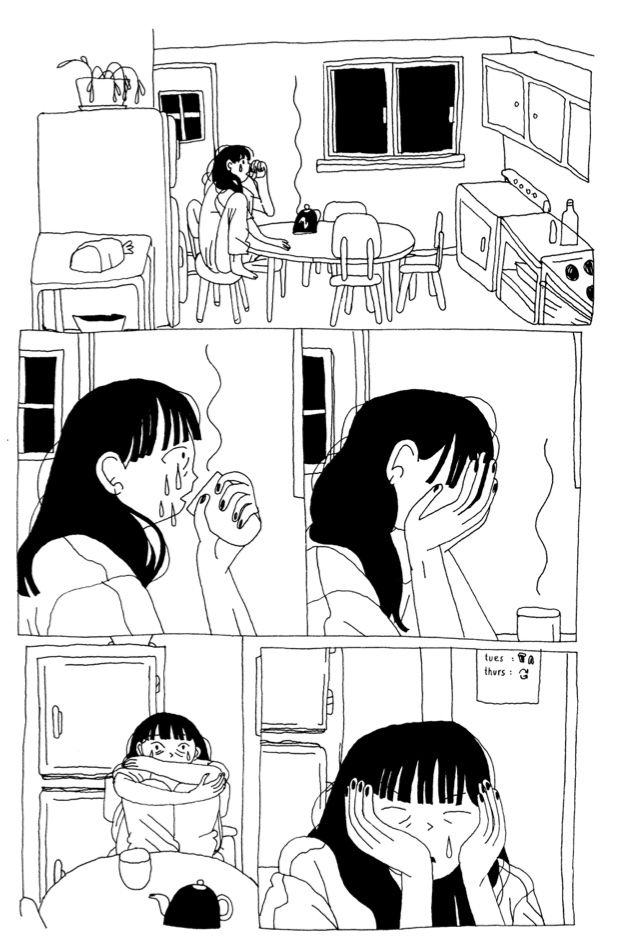
As Malle shows it, that’s part of the insidiousness of depression; it isolates Clara from her friends and from herself. Malle shows Clara surrounded by friends who love her and want to be there for her but something convinces Clara that she’s not good enough for them, not strong enough for them. But it also convinces her that she’s not enough. Reading the book, it’s staggering to realize the truth behind Malle’s depiction of the loneliness that Clara feels even though coworkers and friends are constantly reaching out to her. Malle’s storytelling focuses on how lonely Clara feels; she thinks she’s alone. And it’s her depression that’s telling her that; that she’s alone and no one loves her because one person didn’t love her. One bad relationship may not be the cause of Clara’s illness but it’s certainly the trigger for it that even a few years later has just worn Clara down.
For such a heavy subject, Malle’s line dances gracefully across each page. In many pages, it’s hard to tell where the lines begin and where they end, creating a contour line that speaks to the expanse of Clara’s world that she’s blind to. Her need for isolation closes her off to the world that Malle shapes around her that’s full of life. But even with that, Malle’s lines feel honest for all of the characters. She captures an urban experience that is both lively and lonely. Her line is open enough to depict Clara’s own highs and lows.
And it’s such a friendly, non-confrontational line. When you start talking about depression, it’s easy to try to assign blame somewhere. This person isn’t taking care of themselves; that person just can’t understand what depression does to someone. That kind of thinking really doesn’t help anyone. It deflects from the needed discussion and required help rather than supporting them. Part of the beauty of this book is how Malle’s art is just so welcoming to the reader, bringing them into Clara’s life in a way where you feel the pain and the weariness of the characters. Clara isn’t a victim and she’s not weak but she’s hurting and Malle’s artwork gets you to feel the rawness of this women’s emotions. There’s a charge to her work that gives Malle’s art a reflection of her character’s emotional state. It’s strong but vulnerable and that tells you a lot about Clara and the state she’s in at this point in her life.
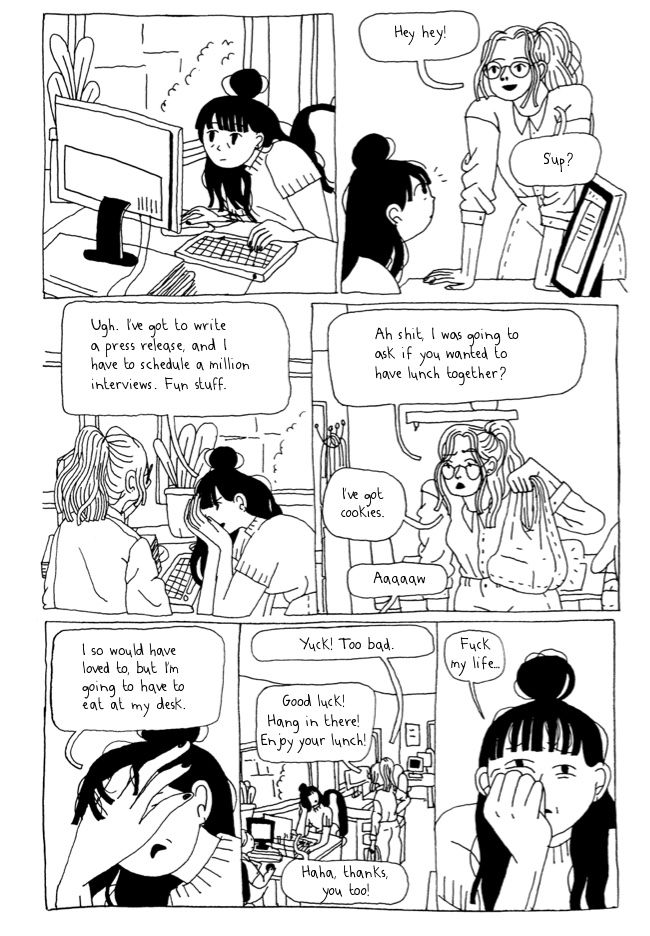
So instead of dealing with blame or the idea that something is wrong with Clara or any of the characters, this book encourages us to exhibit and practice empathy. It encourages us to spend some time not just in Clara’s head but in the heads of her friends who are trying to understand and help her. It’s important that as we understand the catalyst for Clara’s health issues (as well as Amélie’s,) Malle is trying to move her characters beyond that. Even as Clara focuses on her past relationships and the damage they’ve done to her, Malle doesn’t seem interested in the cause as much as she wants to focus on the healing that’s needed.
Malle doesn’t judge her characters and asks us to also not to judge them. The book is seeking understanding, empathy, and the ability to allow ourselves to realize we don’t know everything that’s going on in our own or others’ lives. As you read the book, you can understand the origins of Clara’s depression, the causes of it. But it’s not a book about those causes. It’s good to understand them but we shouldn’t be judging Clara’s mental and emotional state based on the causes. We shouldn’t be judging them at all and instead understand that regardless of the cause, the effect of anyone’s depression is very real and very serious.
Clara is an incredibly strong character even if her depression convinces her otherwise. At that early party, when we see her trying to help Amélie, we see a young woman who has gone through her own troubles and survived them and who can share her strength and knowledge with someone going through what she has before. So when just pages later we see her struggling, it’s a bit shocking as we try to match together these two images of Clara, the strong image and the struggling image. That’s part of the insidiousness of Clara’s emotional state as it tries to convince us that is her. Malle makes sure that we’re able to see who Clara really is and the strength that she possesses as she rediscovers it herself in this great book.
